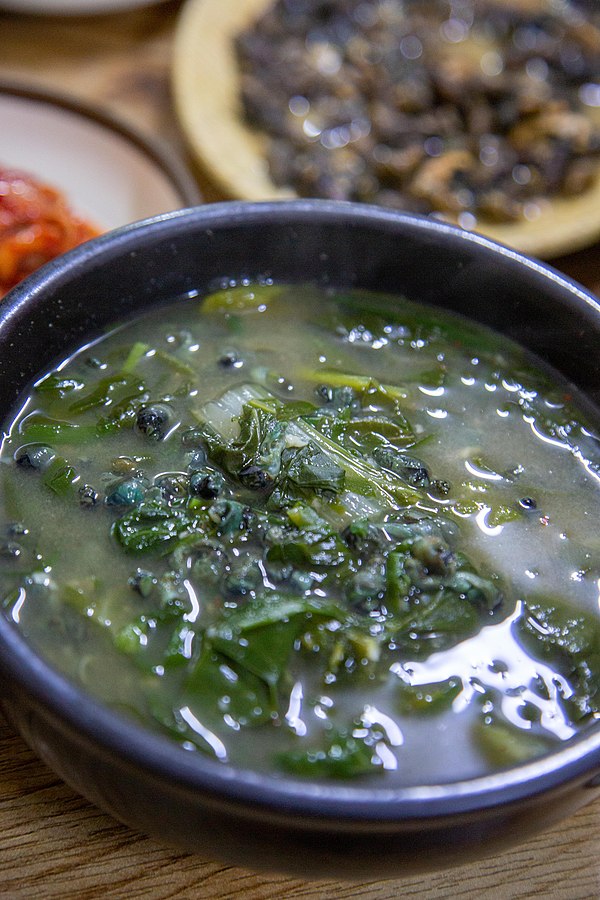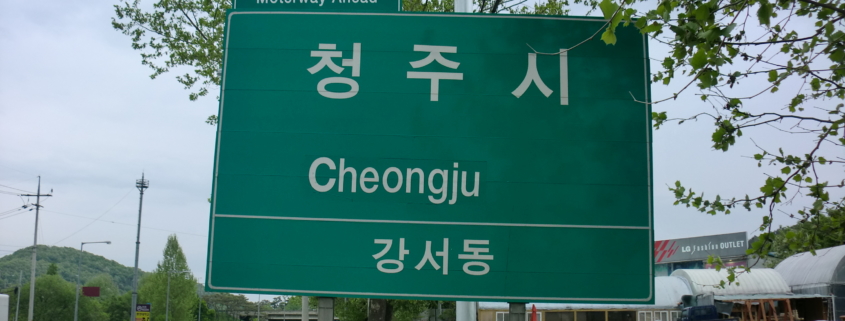Cheongju
Welcome to the definitive resource for expats and English teachers living, working and traveling in Cheongju, South Korea!
If you’ve come across this page because you are researching about moving here before accepting a teaching job offer, we first suggest you hold your horses to quickly learn how you might be making the worst decision of your life and why Adventure Teaching can make it the best one ever!
Also, for getting plugged into the Cheongju expat community, we recommend you take the following steps:
- Join our affiliate Facebook Group that we helped create, Every Expat in Korea, home to 60,000+ expats in Korea including Cheongju!
- Discover our regularly updated Cheongju guide, featuring news, foodie finds and fun stuff to do in or around Cheongju as well as the rest of Korea!
Overview
A city located south of Seoul, Cheongju is the seat of the Chungcheongbuk-do Provincial Office. The city is the political, economic, social and cultural center of Chungcheongbuk-do Province.
Cheongju is bordered by Daejeon Metropolitan City and Boeun-gun to the south. Sejong Special Self-Governing City and Cheonan to the west. Jincheon-gun and Jeungpyeong-gun to the north, and Goesan-gun to the east.
The economic scale of Cheongju City has already seen it become a world-class metropolis. As of 2018, the total regional production (GRDP) of Cheongju City exceeded 34 trillion KRW, which is similar to that of Gwangju Metropolitan City, which is about 37 trillion KRW, and is comparable to Daejeon Metropolitan City, which is about 39 trillion KRW.
Although Chungbuk Province is located in the center of the country, Gyeongbu Expressway and Jungbu Expressway through Cheongju were the only Gyeongbu axis infrastructure in the province until the Jungang Expressway or Jungbu Naeryuk Expressway was built. For this reason, development investment in Chungcheongbuk-do was focused on Cheongju City. Therefore, most of the infrastructure in Chungcheongbuk-do is concentrated in Cheongju. Large stores and companies such as Hyundai Department Store’s Chungcheong Branch, Lotte Outlet, KBS Cheongju Broadcasting Bureau, and Cheongju Broadcasting Corp. and representative organizations of Chungcheongbuk-do are mostly concentrated in Cheongju.
Jeungpyeong-gun, Jincheon-gun, Eumseong-gun, and Goesan-gun, which are counties close to Cheongju City, are actually serving as satellite cities of the larger city itself.
Cheongju History
Overview
During the Samhan period, Cheongju was the land of Mahan. In the Baekje period, it was called Sangdang-hyeon. In the time of the Unified Silla period, it was named Seowon-gyeong. Chungcheong Gamyeong was moved from Chungju to Cheongju in 1908. In 1946, Cheongju-bu and Cheongwon-gun were separated by the U.S. Military Government, and Cheongju-bu was promoted to Cheongju in 1949.
On June 27, 2012, the administrative districts of Cheongju City and Cheongwon-gun were decided to be integrated, and on July 1, 2014, the integrated Cheongju City was launched.
Prehistoric Times
Rice remains were discovered in Soro-ri, Oksan-myeon, Cheongju. It is one of the oldest rice-growing regions. Nowadays, there is a monument to the Soro-ri rice family.
Proto Three Kingdoms Period ~ Later Three Kingdoms Period
It became Cheongju-mok during the reign of King Taejo and became the etymology of Chungcheong-do along with Chungju.
Heungdeoksa Temple, where Jikjisimcheyojeol, the oldest extant metal type book, was published, is located in Cheongju, and there is an ancient printing museum next to it. Although Cheongju City is actively promoting Jikji-related marketing, it is sometimes seen that they are promoting Jikji even in places where it doesn’t seem to matter at all due to the excessive enthusiasm. For example, there is a Jikji booth at an oriental medicine fair. If you come to Cheongju and go around the neighborhood, you will see street trees, street lamps, crosswalk guards, and bus stops with the words ‘Jikji’ inscribed on them. Elementary schools, daycare centers, taekwondo studios, bone haejang-guk restaurants, etc. are really overflowing with ‘Jikji’.
Joseon
Until the late Joseon Dynasty, it was composed of Cheongjumok and Munihyun. And Cheongju-mok had incorporated Cheongcheon-hyeon, one of the sub-hyeons of the Goryeo Dynasty, since the reorganization of administrative districts in the early Joseon Dynasty.
After the implementation of the 23-division system, it was transferred to the jurisdiction of the Gongju Ministry, and after the implementation of the 13-provincial system, it became Cheongju-gun, Chungcheongbuk-do and Mun-gun, Chungcheongnam-do. In 1906, Juan-myeon, the border town, was incorporated into Hoedeok-gun, and the present-day Sosin-myeon, Cheonan City, was incorporated into Mokcheon-gun.
Japanese Occupation
The status of administrative districts in the current Cheongju area in 1914.
In 1914, at the time of the amalgamation of administrative districts under Japanese rule, Munmun-gun, Chungcheongbuk-do was annexed to Cheongju-gun. Also, Cheongcheon-myeon was incorporated into Goesan-gun.
In 1931, Cheongju-myeon was promoted to Cheongju-eup. In 1935, part of Saju-myeon was incorporated into Cheongju-eup.
On April 1, 1937, Oedeok-ri, Naedeok-ri, Gyodong-ri, Geumcheon-ri, Sanbuk-ri, Uncheon-ri, Yeongun-ri, and Hwaheung-ri were incorporated into Cheongju-eup, and Namsanjeong (Sanbuk-ri), Uncheonjeong, Oedeokjeong, Naedeokjeong, and Mundongjeong (Gyodong-ri) were incorporated into Cheongju-eup.), Geumcheonjeong, and Yeongunjeong were newly installed.
Korea
In 1946, right after liberation, Cheongju-eup was promoted to Cheongjubu and separated from Cheongju-gun, and the remainder of Cheongju-gun was renamed Cheongwon-gun. At the same time, Japanese names were arranged. Cheongjubu was renamed Cheongju in 1949.
In 1989, the Eastern and Western branch offices were established, and in 1990, the area continued to expand through additional incorporation of Bukil-myeon, Namil-myeon, and Nam-myeon, Cheongwon-gun, and in the early 1990s, the population exceeded 500,000. Considering that Cheongju’s population was about 250,000 in the 1980s, it nearly doubled!
In 1995, two general districts were established: Heungdeok-gu (formerly Seobu Branch) and Sangdang-gu (formerly Dongbu Branch).
It was merged with Cheongwon-gun on July 1, 2014, and became one again after 68 years of separation between Cheongju-bu (Cheongju) and Cheongwon-gun.
Cheongju Population
The registered resident population is 848,482 as of December 2021. Based on Facebook users, it is estimated that there are at least 9000 foreigners living within Cheongju vicinity.
As of 2021, the average age of citizens in Cheongju City was 41.5 years, an increase of 0.5 years from the previous year, but 2.1 years younger than the national average of 43.6 years. The average age varies widely by region, with Miwon-myeon, Nangseong-myeon, and Hyeondo-myeon being the highest avg at 58.9 years old, while younger areas consist of Gangseo 2-dong (33.5 years), Ochang-eup (35.6 years), and Bokdae 1-dong (36.6 years old).
After the establishment of Sejong Special Self-Governing City in 2012, there was a lot of talk about whether the population would decrease. However, in 2015, population growth started to wane and people began to slowly move to Sejong City. Of course, as Sejong City grows, Cheongju continues to grow due to the trickle-down effect, but it seems that there are quite a few young people leaving for Sejong City.
Although the fertility rate in Cheongju is higher than the national average, it is gradually decreasing, and large shopping complexes such as Starfield and Costco also tried to enter Cheongju, but they failed every time due to opposition from civic groups and small business owners. Still, the population is maintaining steady as the residential conditions are improving along with the development of housing sites in certain districts. Recently, the population growth rate of Gangseo 2-dong, where Cheongju Technopolis is being developed, is fast.
The reason why the population is dropping to Sejong City is the problem of house prices (especially the price of jeonse). Thanks to the cheap jeonse prices in Sejong City, local young people are moving to Sejong City, and the nearby city of Daejeon is also experiencing this phenomenon severely. In addition, a long-term unsold apartment situation is erupting due to a supply glut. In addition, a long-term real estate cold wave has swept through since 2015, and apartment plunging occurred in 2018. But now, the unsold housing problem has been resolved, and the population is rising.
In 2020, it is said that the population of Cheongju will gradually increase as it is selected to attract a radiation accelerator in Ochang-eup, Cheongju, and is designated as a specialized complex for secondary battery materials, parts, and equipment. In fact, apartment prices in Cheongju, which had been on a downtrend since the attraction, are also showing a steep rise of up to 1%, centering on Cheongwon-gu and Heungdeok-gu.
Climate
The Musimcheon Stream, which runs through Cheongju City, is so small that compared to the size of the plain, it is really hot in summer due to the heat island effect. In fact, the temperature is higher than that of Yeongdong-gun further south or northern Jeolla-do, and the only passing stream is Musimcheon, so even the wind does not blow well in summer. So, students from the southern provinces say that Cheongju is hotter. Cheongju was the hottest area after Daegu, Jeonju, and Gwangju in terms of average summer temperatures and average temperatures.
The heat island phenomenon became more severe in the 2010s. In July 2020, even when the temperature was lower than the Korean Peninsula, the average temperature was 24.3 °C. During the heatwave in 2021, it is known to be the hottest place in the country as of June to July. The average monthly temperature was 28.4°C, which was the hottest July on the Korean Peninsula for two consecutive years.
Especially in Jecheon and Danyang, the average temperature in midwinter is on par with those of Gangwon-do. Like Cheorwon, Hwacheon, Inje, Yanggu, and Hongcheon. For this reason, most areas of Chungcheongbuk-do have lower temperatures than most of Gyeonggi-do. Nevertheless, the temperature is often lower than in Seoul. It snows less than in other regions.
The average temperature in Cheongju is an average of 12.5℃ (January average -2.3℃, August average 25.8℃/highest temperature 39.1℃ (August 15, 2018), lowest temperature ever recorded -26.4℃ (February 6, 1969)), Average annual precipitation 1,387.6 mm (maximum rainfall 293 mm per day (August 25, 1995))
Meanwhile, in 2021, not only summers became hotter, but winters became warmer and the year-round temperature itself increased due to the effects of global warming and the heat island. In particular, the average temperature in Cheongju was 3.6°C/9.6°C in February and March, when the temperature was above all-time high in many regions, and the average temperature in November was 9.0°C and December, 1.7°C, despite the occasional early cold. The temperature has risen to a level that is quite different from that of Seoul.
Natural Disasters
On August 25, 1995, 293.0 mm of rain fell from Cheongju-si, and there was a history of heavy rain damage like Cheonan. In the 2000s, it rained heavily in Cheongju from August 6 to 7, 2002, but this time Cheonan suffered great damage and Cheongju suffered little damage.
There were no natural disasters that could be said to have suffered afterward, except for heavy snowfall in the Chungcheong area in 2004 and heavy rain in the central region in 2017. Typhoons are also at the level that the wind blows a little too hard due to their location, and they seem to benefit greatly from the inland regions. In the case of an earthquake, it cannot be said that it is completely safe as a fairly large earthquake occurred in Songnisan in the past.
Heavy rains in the Cheongju region of 2017
On July 16, 2017, a whopping 91 mm of rain fell per hour, breaking the record of precipitation per hour in the history of Cheongju weather observation. Hourly precipitation is overwhelmingly No. 1, and daily precipitation is a whopping 290.2 mm, the highest in July and the second highest in history after August 1995. For this reason, the media calls this flood the first flood in 22 years following 1995. However, since the rate of 91mm per hour is only once in 100 years, the possibility of flood disasters in the future is very low.
Contrary to the original belief that a rainwater storage facility could be built near the main gate of Chungbuk National University to prevent flood damage, major rivers such as Musimcheon and Mihocheon were in danger of flooding. As a result, an emergency evacuation broadcast was broadcast to the surrounding residents, flooding of vehicles was continued in various parts of the city due to the blown water, and there was also a commotion in the underground parking lot of the apartment complex to evacuate vehicles due to water.
In the midst of this, four members of the Chungbuk Provincial Government went on a business trip, causing a controversy. Among them, Provincial Assemblyman Kim Hak-cheol’s last words became a nationwide controversy.
Cheongju Urban Structure
Main City Area
In the case of the main city, the city division is basically divided on the basis of the road axis extending in the shape of ‘ㅓ’ based on the equivalent crossroads, extending toward Osong and Sejong (Jochiwon). Although it has such a simple basic axis, in each direction, roads such as Industrial Complex Six Street, Seok Education Street, and Naedeok Chil Street are scattered. In particular, in the case of Seok Education Street, there is the largest market in Cheongju called ‘Yukgeori Market’, so traffic gets very congested on weekends.
Representative new towns are Gagyeong-dong and Habokdae area, where the bus terminal was relocated to. As Gagyeong-dong was developed in large numbers along with Gagyeong Terminal, the population density increased. Habokdae has now become the largest entertainment district in Cheongju. In the past, the center was moved from Chungbuk National University’s main gate area. This area is large enough to be counted as an entertainment district near the university in terms of unit area, and is generally convenient as a place to play for young people in their 20s. In addition, Sannam-dong, Geumcheon-dong Plaza, and Yulryang-dong are developing in earnest.
Recently Developed Areas
In fact, even in the 1990s, the central city area was very tight. One of the proofs is that both Sangdang-gu Office (currently Cheongwon-gu Office) and Heungdeok-gu Office (current Seowon-gu Office) before the integration were located close to the old town, and even the intercity and bus terminals in Gagyeong-dong were also close to the old town in the past. Gagyeong-dong, Bokdae-dong, Yullyang-dong, Jujung-dong, Juseong-dong, Sannam-dong, Bunpyeong-dong, Seonghwa-dong, Gaesin-dong, Jukrim-dong, Yongjeong-dong, Yongdam-dong, Ochang-eup, and Osong-eup, which were originally outlying areas, have recently been converted into residential areas.
Bangseo District and Southeast District have the largest scale among the housing sites currently being developed.
In addition, Cheongju Technopolis development is in progress in areas such as Munam-dong and Songjeol-dong, Heungdeok-gu above the Cheongju Industrial Complex, which was a long-awaited project of Cheongju City. During Lee Seung-hoon’s tenure as mayor, SK Hynix decided to invest 15.5 trillion won in Cheongju Technopolis to greatly expand the industrial lot. In addition, the Bukcheongju Station area project was scheduled.
In addition, small-scale residential districts developed at the edge of the main town include Biha district (Biha-dong, Heungdeok-gu), Sacheon district (Sacheon-dong, Cheongwon-gu), Homi district (Yongdam-dong, Sangdang-gu), and Gama district (Gamari, Nammyun, Seowon-gu).
Township area
Ochang and Osong are new towns based on government-led industrial and research complexes and public buildings. In the case of Ochang, the new town area is called “Science Complex” or 1 Industrial Complex by Cheongju citizens, and the old town is called Old Ochang. The industrial complex area adjacent to the former Ochang is often referred to as the 2nd Industrial Complex. In general, development began in the early 2000s. In both Ochang and Osong, there are a lot of industrial and research facilities of large corporations. Osong is home to the Ministry of Food and Drug Safety, the Korea Centers for Disease Control and Prevention, and Osong Station, a railway station.
Ochang-eup now has over 70,000 people due to continuous population growth, and was promoted to ‘Dae-eup’ in May 2021.
In Osong, the 2nd Osong Life Science Complex is under development in Jeongjung-ri and Bongsan-ri, and large-scale apartments and residential complexes are expected to be sold steadily. Also, Osong Confex is scheduled to open in 2024. In addition, the 3rd Osong Life Complex will be developed in the Dongpyeong-ri and Seopyeong-ri areas.
There is also an industrial complex in Oksan-myeon, where thousands of apartments were built. If Oksan 2 Industrial Complex and Guksa Industrial Complex are developed and the agricultural and fishery product wholesale market is relocated in the future, there is a high possibility that a large commercial district will be formed and apartment houses will be built.
The total population including the western townships outside Mihocheon (Ochang-eup, Osong-eup, Oksan-myeon) is well over 110,000. Due to the characteristics of development that has been carried out since the time of Cheongwon-gun and the potential for great development in the future, development is mainly preferred in eup and myeon areas.
Future Development
By the 2030s, considerable progress will have been made in the development of the Ochang and Osong districts, and the redevelopment of the original downtown area in Cheongju will be expected to begin. The population will likely exceed 1 million. Cheongju City is hastening the development of the Osong Station area to secure a population base through collaboration with Jochiwon, and is also promoting redevelopment of the original downtown area of Cheongju.
In addition, the Chungbuk Free Economic Zone in Naesu-eup and Osong-eup is also under development. Accordingly, it is said that a new airport city with a capacity of 50,000 will be built in the Naesu-eup area.
Most of the old Cheongwon-gun areas, except for the areas mentioned above, are rural areas. In particular, most of the towns and villages located to the east are made up of mountains or reservoirs, and many of them are confined to development-restricted areas. Due to this characteristic, the population is concentrated in the western region rather than the eastern region.
Transportation
Gyeongbu Expressway and Jungbu Expressway pass by, and there is Osong Station, a branch station for the KTX Gyeongbu and Honam Express lines. Also, there is Cheongju International Airport, the only international airport in the Chungcheong region.
In addition, there is the Chungbuk Line railway and the Chungcheong Inland Expressway that connects major cities in Chungcheongbuk-do, making it the center of the province and an important transportation hub.
Cheongju Food

Cheongju’s Black Snail Soup
If Gyeongsangnam-do Province is known for its pork soup, Cheongju’s Chungcheongbuk-do Province is known for its olgaenggi (black snail) soup. As a result, it is not uncommon to see many restaurants serving this in Cheongju. And due to being in the same part of the country, you can usually see some places selling this dish in nearby Daejeon. Although pork soup has been gradually appearing in large cities including Seoul, olgaenggi soup has not yet spread widely. However, in the northern regions of Jeollabuk-do Province, which is close to Chungcheongbuk-do, this black snail soup is often eaten.
Red pepper dumpling soup
One more dish that can only be found in Cheongju is red pepper dumpling soup. You can taste it at specialty stores in Cheongju, and even that is a food that only three stores handle. Although the price is usually in the range of 6,000 to 7,000 won, the dumplings are well-packed and have a strong taste. All three stores are located on Seongan-gil, and the taste is slightly different, so many people take turns going to the three stores. It was a specialty of Cheongju known only to those in the know, but since it was introduced in the cooking TV program, Baek Jong-won’s Top 3 Chef King, it has become well known to people from other countries as well. All three shops are old and small, so there aren’t many tables and you might have to wait sometimes. It is better to aim for a quiet evening or go around 3 or 4 in the afternoon.
In Seomun Market in Cheongju, Samgyeopsal Street has been established. This samgyeopsal street is the only samgyeopsal-themed alley in the country built in the 2010s. 15 samgyeopsal restaurants are located on the 340m-long street. Samgyeopsal street vendors are introducing unique soy sauce pork belly at each restaurant by adding various ingredients to the special soy sauce recipe. However, even Cheongju people do not know if Cheongju is a city really famous for its pork belly.
In the early 1970s, pajeori (seasoned scallion side dish commonly served with Korean BBQ) was first developed in Cheongju. Due to the nature of the inland region being far away from the sea, meat-oriented eating out has become common.
Jjaguli
In addition, one of the foods of Cheongju that the people of Cheongju are not familiar with is jjaguli. A local dish of Chungcheong Province, jjaguli is a dish made by boiling meat and potatoes. Not overly common until the cook-bang craze, jjaguli appeared on TV several times, raising awareness a little.
In Cheongju, even in bars, there are cases where jjaguli is on the menu, but not necessarily the best. The famous place in Cheongju for jjagul is near Bongjeong Elementary School in Bongmyeong-dong, Heungdeok-gu.
Another unique local food is called ‘Woori Mart Cake’. When you enter Woori Mart in Mochung-dong, Cheongju (109 Ssangsaem-ro, Seowon-gu, Cheongju-si, Chungcheongbuk-do), there is a bakery corner on the left, where cakes are baked. However, there is only one type of cake. Basically, it is a typical dark forest cake topped with cherries on a chocolate cake. But the price is very cheap. Compared to other bakery cakes, it is sold at half to 60% price (Probably that’s why it’s famous). Note that cakes that are almost similar to this cake are also sold at the bakery located inside Hanaro Marts.
In summary, Cheongju’s famous foods include red pepper dumpling soup, jagulgi, olgaengi soup, soy sauce pork belly, and grilled pork. All of which have appeared on various TV shows.
Cheongju Tourism
Famous sites worth visiting include:
Cheongnamdae
Daecheong Lake
Suamgol
Sangdang acidity
Yongdusa Temple Cheoldanggan
National Museum of Modern and Contemporary Art, Cheongju
Cheongju National Museum
Cheongju Early Printing Museum
Heungdeoksa Temple Site
Cheongju Museum of Art
Cheongju Meat Street Market
Chojeong Haenggung
Northeast Dongtoseong
Cheongju Zoo
Uam Children’s Center
Okhwa Natural Recreational Forest, Okhwa Gugok Tourist Trail
Midongsan Arboretum
Muni Cultural Complex
Ochang Lake Park
Osong Lake Park
Cheongju Central Park
House of Fortune
Sinchaeho Shrine and Mausoleum
Baekje Relics Exhibition Hall
New Port Seowon
Son Byung-hee, teacher Yuheoji
Sorori Rice Seed Museum
Deokchon-ri Independence Activist Village
Cheongju Events
A notable event is the Cheongju International Craft Biennale held every other year. There are also Cheongwon Organic Life Festival, King Sejong and Chojeong Mineral Spring Festival and Chungbuk Art Festival.
Osong also hosts the Osong Cosmetics and Beauty Industry Expo every other year. Also on March 3rd, a Samgyeopsal Festival is held in the Samgyeopsal Street area of Seomun Market in Cheongju.


